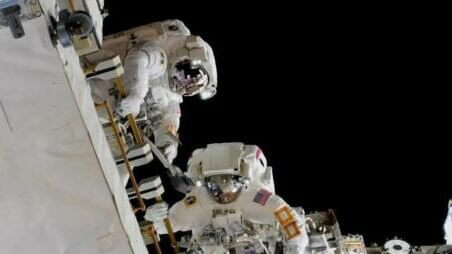January 1, one of the ways astronauts on the International Space Station celebrate the New Year is to eat radishes. This is the first vegetable to be grown in space except green leafy vegetables.
According to the report, these space radishes have grown seeds in microgravity in the past 27 days. This is part of the National Aeronautics and Space Administration (NASA) program to develop space agriculture.
“The astronauts appreciate eating fresh produce in a space lab that is in orbit, where the supply of fresh produce is very limited,” said Carl Hasenstein, the lead researcher at the Radish Growing Program.
According to the report, Hasenstein is a professor of biology at the University of Louisiana in the United States. He said astronaut Kate Rubins “commented that the turnips were as delicious as she grew in the garden”.
The report also said that Rubins harvested the radishes yesterday, cut off their leaves first and saved some of them for scientific research after returning to Earth.
Hasenstein said that Rubins and astronaut Mike Hopkins “proclaim that eating fresh food is the most pleasant”.
Hassenstein said that astronauts harvested similar radishes at the end of November, but NASA did not allow astronauts to eat them because the agency had to assess possible pollution on such small-orbit farms.
“The turnips grown at the space station are cleaner than anything you buy in the store,” Hasenstein said.
The report pointed out that the number of astronauts on the International Space Station is now the largest in several years – four American astronauts, two Russian astronauts and one Japanese astronaut.
On December 30, 2020, local time, American and Japanese astronauts tweeted a short video wishing people on earth a happy New Year.
Techshot, headquartered in Indiana, USA, made radish planting boxes. Dave Reid, the company’s executive, said that eating radish grown on the space station for the first time while celebrating the New Year was just a coincidence.
Reed said: “The radish looks very good. We harvested 19 of them, nine of which were for the use of space station personnel. The other 10 radishes were frozen to take them back to Earth and analyze them.”
The report pointed out that these radishes are planted on a substrate composed of small clay balls and grow by artificial light. Clay balls will retain water and fertilizer.
The planting box—the “high-end plant-planting cabin”—is a container that is about 20 inches (50.8 cm) long, wide and high, Reed said.



